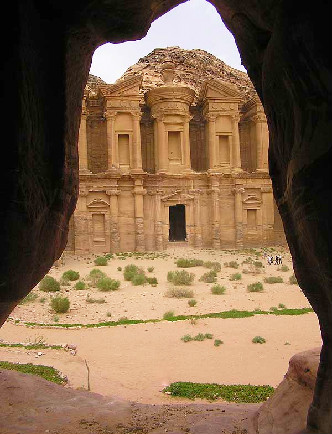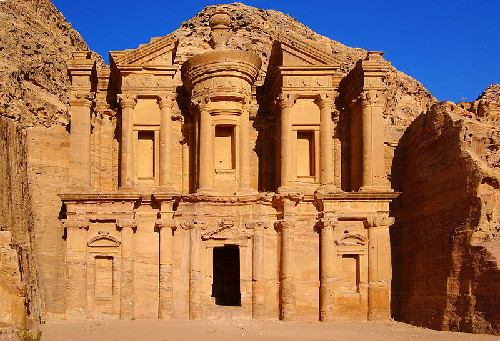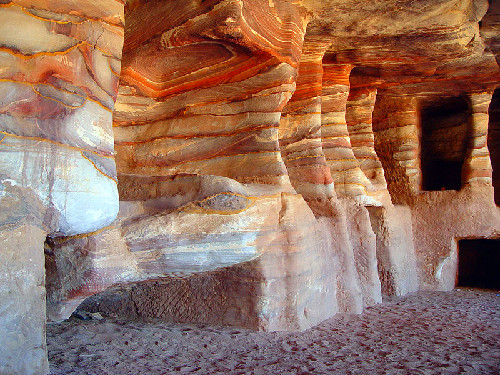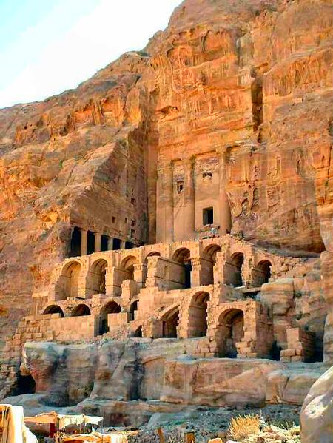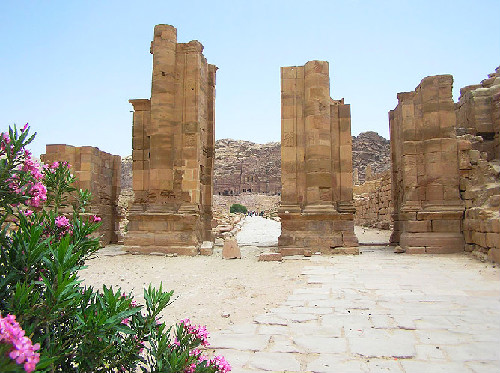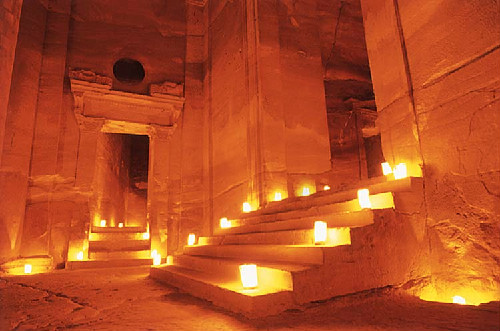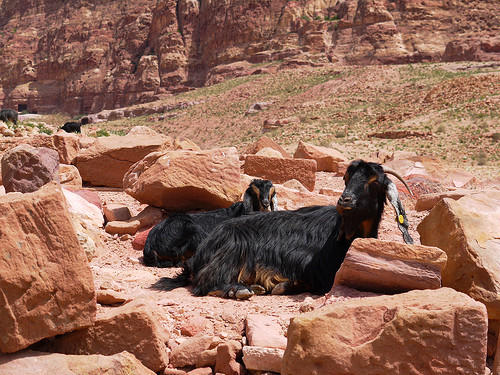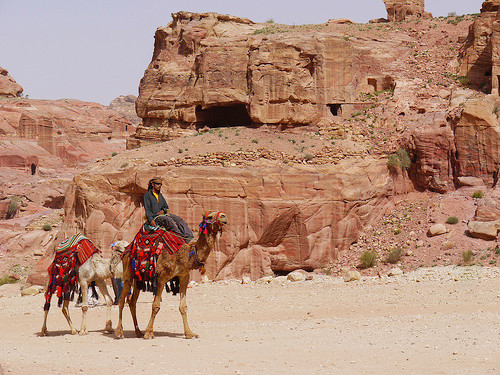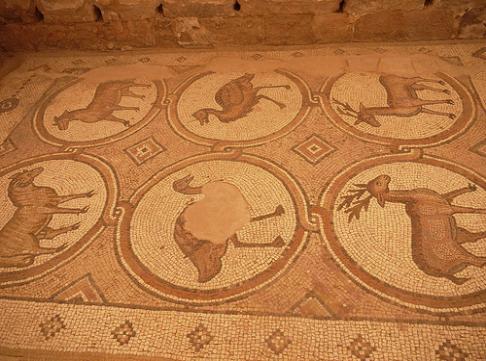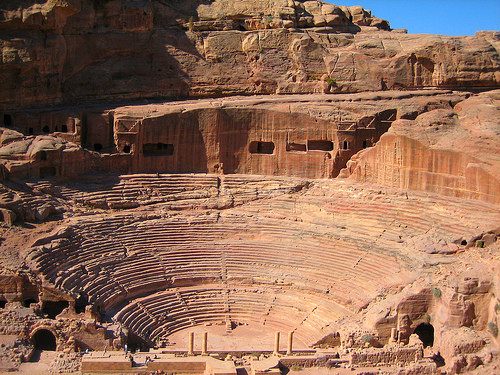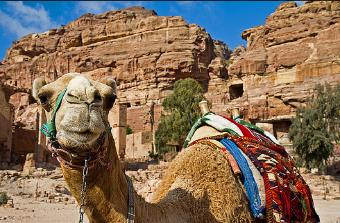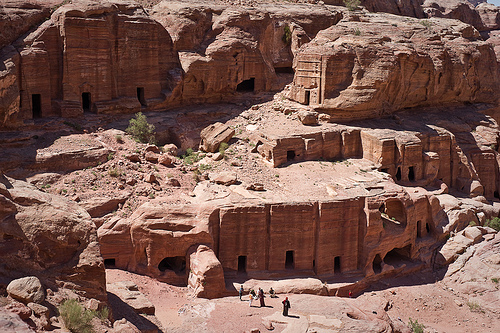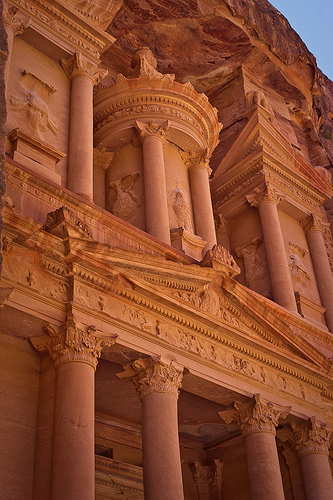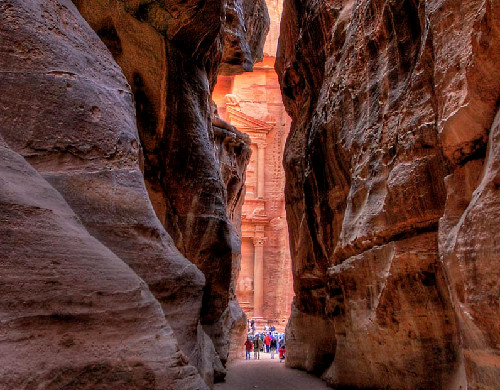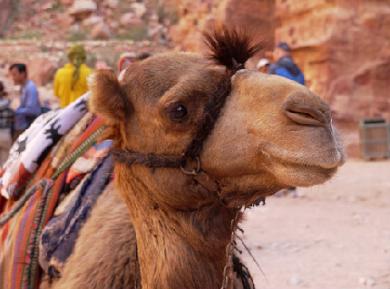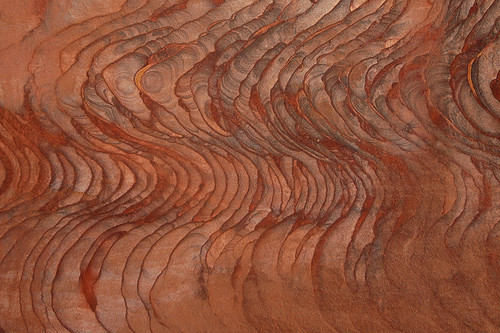
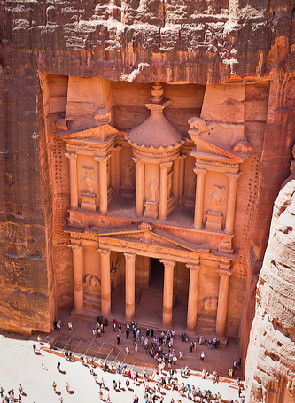
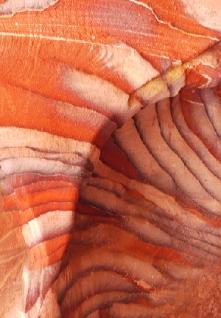
| Petra by John William Burgon, ca. 1845 It seems no work of man's creative hand By labour wrought as wavering fancy planned; But from the rock, as if by magic grown, Eternal, silent, beautiful, alone! Not white, like that old Doric shrine, Where erst Athena held her rites divine, Not saintly-grey, like many a minster fane That crowns the hill and consecrates the plain; But rose-red, as if the blush of dawn That first beheld it had not yet withdrawn; The hues of youth upon a brow of woe, Which man deemed old two thousand years ago. Match me such marvel save in Eastern clime, A rose-red city half as old as time! |
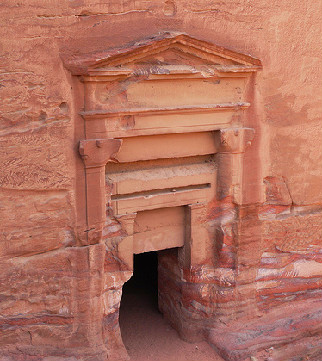
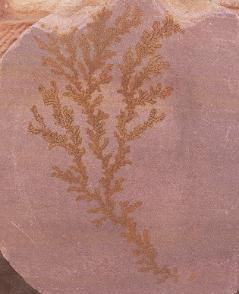
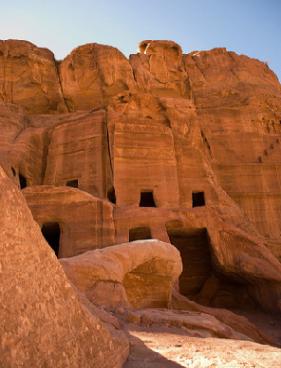
| A ROSE-RED CITY |
Petra is an ancient city in Jordan of great historical and archaeological interest. It was
established in about the 6th century BC as the capital city of the Nabataeans. It sits on the
side of Mount Hor (not only on, but in the mountain, too, since most of its structures were
built into the mountainside), near a valley that runs from the Dead Sea to the Gulf of Aqaba.
The site of Petra was unknown to the western world until 1812. It's been the subject of
several books and poems since its discovery and the location of at least a half dozen films,
including Indiana Jones and the Last Crusade.
In 1985, Petra was designated as a UNESCO World Heritage Site. It suffers from significant
threats, including collapse of its ancient buildings due to age and, also, due to erosion from
flooding; from extensive weathering due to salt upwelling; and from past improper
restoration of some of its structures. Petra National Trust was founded in 1989. The
foundation has worked with many local and international organizations to promote the
protection and preservation of the old city. Only about 15% of the site has been explored.
Tourists come daily to the ancient site, some with guides on camel back. But, save several
herds of mountain goats, there have been no inhabitants in the city for centuries.
established in about the 6th century BC as the capital city of the Nabataeans. It sits on the
side of Mount Hor (not only on, but in the mountain, too, since most of its structures were
built into the mountainside), near a valley that runs from the Dead Sea to the Gulf of Aqaba.
The site of Petra was unknown to the western world until 1812. It's been the subject of
several books and poems since its discovery and the location of at least a half dozen films,
including Indiana Jones and the Last Crusade.
In 1985, Petra was designated as a UNESCO World Heritage Site. It suffers from significant
threats, including collapse of its ancient buildings due to age and, also, due to erosion from
flooding; from extensive weathering due to salt upwelling; and from past improper
restoration of some of its structures. Petra National Trust was founded in 1989. The
foundation has worked with many local and international organizations to promote the
protection and preservation of the old city. Only about 15% of the site has been explored.
Tourists come daily to the ancient site, some with guides on camel back. But, save several
herds of mountain goats, there have been no inhabitants in the city for centuries.
| The sandstone of Mount Hor gives Petra's structures their brilliant red hue. |
| Petra's theatre could seat 3,000 people. |
| Left, mosaics in a Petra church; above, fossil embedded in a rock. |
| Ozymandias by Percy Bysshe Shelley, ca. 1820 I met a traveler from an antique land Who said: Two vast and trunkless legs of stone Stand in the desert. Near them, on the sand, Half sunk, a shattered visage lies, whose frown And wrinkled lip, and sneer of cold command, Tell that its sculptor well those passions read Which yet survive, stamped on these lifeless things, The hand that mocked them, and the heart that fed; And on the pedestal these words appear: "My name is Ozymandias, king of kings - Look on my work, ye mighty and despair!" But nothing beside remains. Round the decay Of that colossal wreck, boundless and bare, The lone and level sands stretch far away. |
| Two goats sun themselves amid the ruins of Petra. |
| Another close-up of the incredible rock formations in Petra. |
| Please don't use the "Send Page" feature of your computer to send this entire web page in an e-mail message or document format. If you'd like to share it, please just send the link. The link to this page is: http://www.thepastwhispers.com/Petra.html |
| This structure began life as a temple and was later used as a church and monastery. |
| Music: A Desert Wind The Past Whispers - Home Friday's Journal Old New Orleans |
| Photos on this page are courtesy of: ShelbyPDX, Gabriele Asnaghi, amerune, douglaspperkins, PatrikPangerl & sharnik at Flickr Creative Commons; Berthold Werner, Etan J. Tal & Jean-Brice DeMoulin at Wikimedia Commons |

